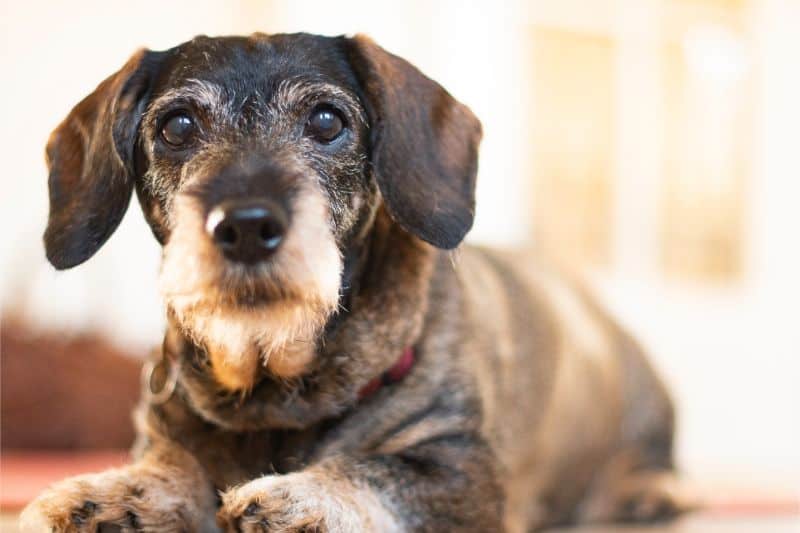Are There Ways to Spot “Old Dog Disease”

The term “old dog disease” sounds like a way to describe many potential habits of aging canines, such as incontinence, decreased mobility, mental confusion, or pain-induced irritability.
While the symptoms of Old Dog Disease can be similar to those of general aging, old dog disease is more often characterized by a head tilt and eyes rapidly moving back and forth. If you’ve never heard of this syndrome, or you want to know more about how to help your best friend in the presence of unmistakable signs, we encourage you to read on.
Scary, but Take Heart
Canine idiopathic vestibular disease, or old dog disease, has the ability to truly freak-out even the most even-tempered dog owners. At first glance, sudden-onset symptoms can mimic those of a brain tumor or stroke, but this fairly common condition can subside within days of arrival.
A Question of Balance
Vestibular disease, such as old dog disease, affect balance. Receptors within the inner ears help orient the body and inform the eyes and extremities. When the vestibular apparatus is compromised, patients are unable to stand or walk without falling and are dizzy to the point of incapacitation.
When connections between the vestibular receptors in the inner ears aren’t working, the corresponding areas in the brain create the following symptoms:
- Stumbling or staggering
- Complete loss of coordination
- Vomiting or nausea
- Rapid eye movements
- Head tilt
- Falling to one side of the body and incapable of getting up
- Rolling around on the floor
- Lack of control in facial muscles
The Root of Old Dog Disease
We don’t always know the exact cause of old dog disease, but quick-developing symptoms can stem from inflammation, ear infection, ruptured eardrum, vascular issues, tumor in the brain or inner ear, drug reaction, and more. It is essential to have your dog examined and tested to rule out life-threatening causes, like stroke, seizure or brain tumor.
Blood work, imaging, and neurological examinations can help us pointpoint what is wrong.
The Old Part
Old dog disease typically affects senior dogs. All breeds can develop symptoms, but it may be more common in large dogs. Cats can also be affected by vestibular disruptions.
If a dog is at risk of dehydration we may place them on IV fluid therapy. Otherwise, once larger-scale medical conditions are ruled out, a patient of old dog disease may recuperate at home with anti-nausea medication. They should be confined in a safe, comfortable space inside, with a harness or towel to help lift them so they can go to the bathroom.
Looking Ahead
Many patients recover within a day or two, but full convalescence can take up to several weeks. Persistent signs, like the head tilt, may never go away. Frequent vet checks can help assuage any fear or doubt.
Old dog disease may not strike every aging pup on the block, but knowing the symptoms can definitely help you stay calm during a frightening occurrence. If you have further questions about this syndrome, please contact us at Beverly Hills Veterinary Associates.
